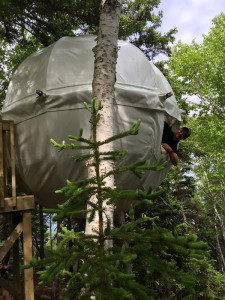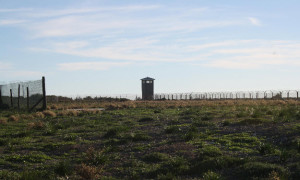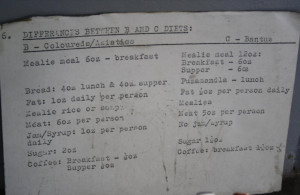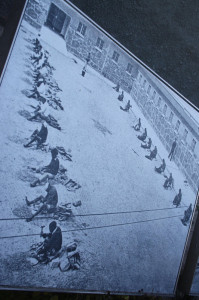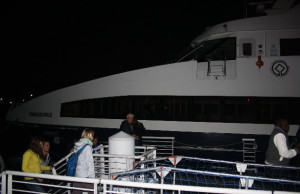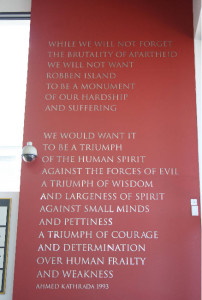Tag Archive
activity architecture art artist building Canada children city CostSaver downtown drive i-95 entertainment Europe event exhibit family festival Florida food fun historic History landmark local Museum music Nature New Zealand Ontario roadtrip sculpture Seattle show sights sightseeing tour tourist Trafalgar travel travelblogger view Washington Washington State water world
Discover Parks (etc) in Canada for FREE
Celebrate Canada’s 150th birthday by visiting the our home and native land. Parks Canada is offering all Canadians a FREE 2017 Discovery Pass so there will be no cost to visit any of their sites. You have the option of visiting 148 locations everywhere in the country. You probably think they’re all about national parks but Parks Canada is way more than that – their mandate includes marine conservation areas and national historic sites.
You could visit the wreck of the HMS Erebus and HMS Terror in Nunavut, view Canada’s highest peak, Mount Logan in Kluane National park, ice fields in Jasper, our country’s birthplace within the fortifications of Quebec, Alexander Graham Bell’s inventions, walk amongst the flower pot rocks on the ocean floor in the Bay of Fundy, Haida Heritage sites, or even Anne of Green Gables‘ writer, Lucy Maude Montgomery’s house.
Here’s a challenge: See how many of their iconic red Adironack chairs you can find and Instagram them. If you want to drool – and – plan ahead, get copies of the National Geographic books Guide to the National Parks of Canada and Guide to the National Historic Sites of Canada.
Yes, you can camp, but you can also reserve a yurt, a goutte d’Ô which resembles a water droplet, a micro cube, large modern houses called oTENTiks or be one of the first to sleep in a hanging Cocoon in Cape Breton.
www.parkscanada.gc.ca
Tel: 888-773-8888
US: Royal Palm Beach, FL – Eat Delish BBQ While Supporting A Great Cause

What started out as a family get together has turned into a great community event. The 12th annual Uncle Gary’s Rock & Rib Fest is a labor of love. Uncle Gary’s lost his 3-year-old daughter 14 years ago to cancer and Started this BBQ event in her honor and to benefit the Kids Cancer Foundation.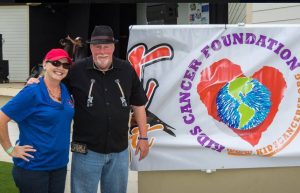
This feel good festival has fun for the whole family including: great live music featuring three live bands throughout the day, dancing, bounce houses, kid’s Fun-zone, face painting, balloon artist, playgrounds, grab bags, games and prizes for the kids and adults, raffles, auction, Pet Rescue Puppies petting zone, princesses and super heroes.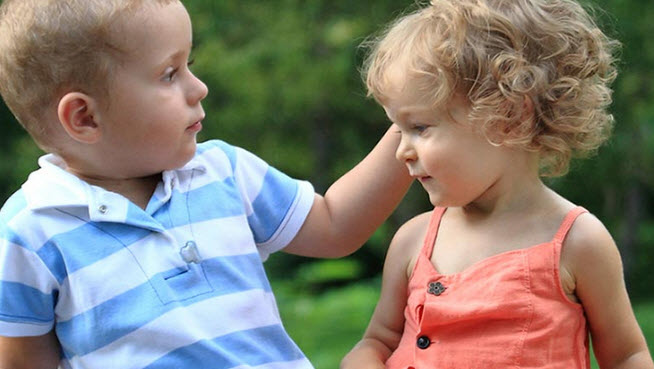
Don’t forget the delectable BBQ foods: yummy baby back ribs, smoked pork tenderloins, burgers, chicken, hot dogs, side dishes and cold beverages.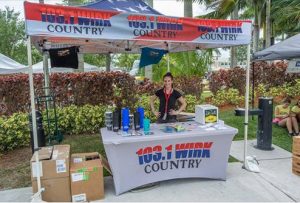
Bring your lawn chairs, blankets, sunblock and kids to this admission free event that is so much more than just a chance to have fun with the family, eat ribs and barbecue and listen to local bands. All proceeds will be donated to the Royal Palm Beach-based Kids Cancer Foundation.
Location: Wellington Amphitheater. 12100 Forest Hill Blvd., Wellington, FL 33414
Date: Sat, April 1, 2017
Hours: 2 – 9pm
unclegarysrockandribfest.com
For Regional Accommodations, Restaurants & Attractions: palmbeachfl.com
US: Mystic, CT – Go Green for Year Fourteen of the Mystic Irish Parade
Each year, a sliver of Ireland is brought to the small town of Mystic, Connecticut when friends and family from near and far celebrate Celtic and Gaelic customs and traditions.
The 14th Annual Mystic Irish Parade is Mystic’s largest single day event; 30,000 plus spectators and 2,000 plus marchers will march from the Mystic Seaport to downtown Mystic. Kicking off promptly at 1pm, the parade, extends from the Mystic Seaport Museum to the Mystic Art Association.
About 2,200 local community participants will march alongside creatively designed floats and dance to the Celtic music echoing throughout the village while over 32,000 people will fill the streets of Mystic to cheer and commemorate the Irish holiday of St. Patrick’s Day. Fun for the whole family, the parade will be hosting Celtic cultural events, outstanding pipe bands, fife & drum ensembles, and marching bands.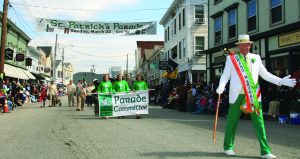
Better yet, the Red Hot Chilli Pipers are back! The Red Hot Chilli Pipers are a famous bagpipe band known internationally, with an ensemble of pipers, guitarists, keyboards and drummers. With groundbreaking fusion of traditional Irish music and rock anthems, they are sure to make this year’s parade the best yet.
On March 20th we can all be a little Irish! Try to arrive early as police will be closing off 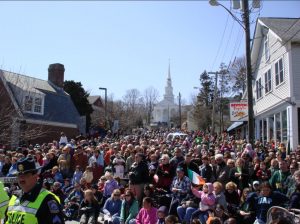 some of the routes to the marching area. The Mystic parade starts at Mystic Seaport’s South Lot and heads into Historic Downtown Mystic where the parade’s “marquis act” will perform. (photo credit: George Tazzini and Larry St. Pierre)
some of the routes to the marching area. The Mystic parade starts at Mystic Seaport’s South Lot and heads into Historic Downtown Mystic where the parade’s “marquis act” will perform. (photo credit: George Tazzini and Larry St. Pierre)
Location: Downtown Mystic, Mystic, CT 06355
Date: Sun, March 19, 2017
Time: Parade Kicks off at 1pm
Tel: 860-572-9578
mysticirishparade.org
For Regional Accommodations: thisismystic.com
Canadian Museum of Nature is Museum of Fun
If you are heading out to Ottawa to enjoy our nation’s capitol, leave some time to explore the Canadian Museum of Nature. It’s the perfect place for all ages of the family to enjoy themselves. The brainy kids (or adults) can soak up extensive details about nature while the playful gang can pull levers or turn knobs in a deep sea sub,  learn on many touch screens, or even dance around in front of the endothermy camera checking out their colorful “hotspots”.
learn on many touch screens, or even dance around in front of the endothermy camera checking out their colorful “hotspots”.
Everyone is awed by the the 19.8-metre blue whale skeleton in the Water Gallery but keeping going further in. All the way in the back are many interactive games for young and old alike: make believe areas for the wee ones, a board game along a wall, animal jigsaw puzzles on touch screens, word games, etc.
Gawk at the dinosaur fossils or walk amongst the fleshed-out dinosaur creatures for photo ops with kids. In the Vale Earth Gallery swoon over the 1200 gorgeous minerals, rocks and meteorites. Our 5 1/2-year-old couldn’t get enough of the joystick which controls a huge earth or the button to start the volcano.
Sure there’s a full size mammal gallery but the 11, 8 and 5 1/2 year-olds all stayed longer in the small Nature Live space where they oogled the cases of walking stick bugs in different camouflage colors and thicknesses. How many of you have come face to face with a tarantula? Then they listened intently as a docent showed fossils which were indigenous to Ottawa.
If you have time there are two 3D movies, “Prehistoric Planet 3D and Micro-Monsters 3D” (both too scary for the 5 1/2 -year old) but our gang liked the interactive museum more.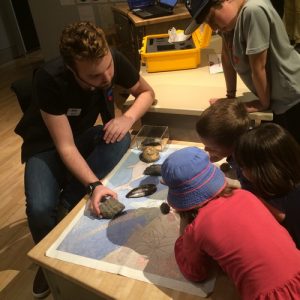
The famous Bird Gallery, with one of the most extensive collections of Canadian birds in the world re-opened June 1. A special exhibit on now is Ultimate Dinosaurs June 11-September 5 and then upcoming is Reptiles: The Beautiful and the Deadly, October 6-April 2 .
A brand new Arctic Gallery will be unveiled on June 23 which is set to explain how the arctic is changing, including plants, animals and people of the area plus scientific research. Outside, three new ecozones will be shown off on June 17 including a woolly mammoths and an “iceberg”.
I’d like to give a thumbs up to the friendly security guards who answered questions informatively and helped to point out nearby bathrooms and water fountains.
Canadian Museum of Nature, a Beaux Arts building, was our first national museum, completed in 1912. Trivia buffs should note that this building served as home to Canada’s House of Commons and Senate following the fire that destroyed the Centre Block of Parliament in 1916.
Location: 240 McLeod St., Ottawa
Phone: 613-364-4021
www.nature.ca
Canada: Quebec – Hiking + Rock Climbing
If you have had some trepidation about rock climbing, Quebec’s Via Ferrata has developed a way to do it much more easily and safely. The activity is set up on a rock face which has been set up with metal holding bars and a steel cable which allows you to hold on and climb up way more efficiently. You can explore cliffs and rock faces of 12 different destinations around Quebec
Germany: Munich Residenz
The Wittelsbach dynasty ruled the German territories of Bavaria from 1180 to 1918 – that’s 738 years, pretty impressive. Munich Residenz, their former royal palace, is located right in the center of Munich and very much open to the public. After 4 centuries of building it, the giant palace is made up of many styles: late Renaissance, Baroque, Rococo and Neo-Classicism.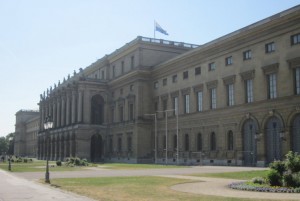
Though spartan on the outside, it is very opulent inside. You can tour it for its architecture, over-the-top room decor (130 rooms), and displays from the former royal collections. After WWII, the Cuvilliés Theatre was built into the Festsaalbau wing. You can also catch the Bavarian Radio Symphony Orchestra in Hercules Hall. In his time, Mozart performed in this palace.
The Treasury houses the jewels of the Wittelsbach dynasty and spans 1,000 years, from the early Middle Ages to Neo-classicism, and includes: crowns, swords, golden objects, rock crystal, ivory, goblets, icons, tableware and toiletries.
The palace suffered huge damages during WWII, but the curators managed to store furnishings, art and details of its architecture in mines. When you are wandering around the 10 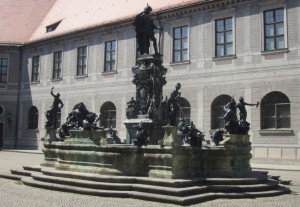 courtyards, see if you can find this fountain with statues of fire, water, earth and air on its corners.
courtyards, see if you can find this fountain with statues of fire, water, earth and air on its corners.
The Wittelsbach family’s head, since 1996, is Franz, Duke of Bavaria, and he still hangs out in Munich. During WWII, the Wittelsbachs were anti-Nazi and were arrested when Franz was 11. He spent time in several Nazi concentration camps. After the war, he studied at the University of Munich and became a collector of modern art. Some of his collection is on loan to the Pinakothek der Moderne Museum (see other post).
South Africa: Visiting Robben Island, UNESCO World Heritage Site
By Adele Shapiro – March 2012.
As a child I used to visit Robben Island with my grandmother. Her son, my uncle, was a warder in the prison services there. The name “Robben”, despite sounding very English – is in fact the Dutch for “Seal” – and the name derives from the extensive seal colony that was found on the Island by the first Dutch settlers.
We would go to the Cape Town docks and from there, take a boat ride to the island, where we would spend the day with family. I was vaguely aware that there were bad people on the island, and that it was a prison…. but little did I know then of the role it was to play in South Africa’s later history. Years passed and now as an ad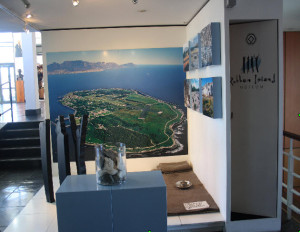 ult, I found myself revisiting the place where “the bad people” were kept, only now I realized that some were not so bad after all.
ult, I found myself revisiting the place where “the bad people” were kept, only now I realized that some were not so bad after all.
I bought a ticket for the tour some days before the trip, (advisable, as they fill up quickly) and took time out to examine the display at the Nelson Mandela Gateway at the V&A Waterfront in Cape Town.
There were many photographs of the political dissidents, the calls for boycotts, the anti-apartheid marches and there was also a prison cell that had been reconstructed for the purposes of the exhibit. I strongly recommend a visit to this exhibit before going to the island as it helps to contextualize the experience.
The trip began, as in times of old, with a boat ride from Cape Town docks, but this time instead of my uncle meeting us, we had a pleasant tour guide who told us jokes on our bus trip, whilst pointing out various sights on the island. Our bus was parked under a sign that said: “Welcome. We serve with pride.” I wondered if that sign had been there when Robben Island had been a prison as it was so sharply incongruous to the environment. I hoped not.
 Robben Island has had a long history. First as a lighthouse to warn ships of the VOC, the Dutch East India Company (Verenigde Oostindische Compagnie), of the rocks that surround the island. But since the end of the 17th century, Robben Island has been used for the isolation of (mainly) political prisoners. The island was also used at various times as an animal quarantine station, a home for slaves, a leper colony, a hospital for the mentally ill and as a prison for French Vichy prisoners of war.
Robben Island has had a long history. First as a lighthouse to warn ships of the VOC, the Dutch East India Company (Verenigde Oostindische Compagnie), of the rocks that surround the island. But since the end of the 17th century, Robben Island has been used for the isolation of (mainly) political prisoners. The island was also used at various times as an animal quarantine station, a home for slaves, a leper colony, a hospital for the mentally ill and as a prison for French Vichy prisoners of war.
First we saw the Leper Graveyard and then house where Robert Sobukwe (Founder of the Pan Africanist Congress) had been kept separate from the other political dissidents.
It seems that Robert Sobukwe had special status in the prison. He was kept in solitary confinement at all times, but allowed certain privileges including access to books, being permitted to study, being permitted to wear civilian clothes, and being permitted bread. His children were allowed to visit him and they had their own bedroom in his “house”. Robert Sobukwe was convicted of incitement for demonstrating against and defying the Pass Laws, and in particular, for his connection to the PAC demonstration (although he was not present) which became known as the Sharpeville Massacre.
The notorious Pass Laws required black people to carry a pass book at all times when outside their compounds or designated areas, and were designed to limit severely the movements of the non-white population. This legislation was one of the dominant features of the country’s apartheid system.
Sobukwe was sentenced to three years in prison. After serving his sentence, he was moved to Robben Island for internment, as a new law called the General Law Amendment Act had been passed, which permitted his imprisonment to be renewed annually at the discretion of the Minister of Justice. This procedure became known as the “Sobukwe clause” and Robert Sobukwe was the only person whose imprisonment was extended under this clause. Imagine how special one has to be in order for parliament to pass a law just for you!
We also learned from our tour guide that the American politician and Pastor, Andrew Young, had fostered Sobukwe’s children in the USA, while Sobukwe had been in prison.
Our tour continued to the lime quarry where the political prisoners had worked. At the entrance to the quarry we saw a small cairn, and learned its history. In February 1995, (the landmark change of government was in 1994), about one thousand former political prisoners gathered again on Robben Island, but this time as free men, and to mark the occasion, each one placed a small stone from the quarry in a pile, making a small memorial to their years of hardship and struggle.
As we continued on our bus ride, we were shown a church, a hospital, a school and a mosque, and realized that far beyond our expectations, the island had supported a whole community. We duly arrived at the prison and tumbled out of the bus for our tour of “the real thing”. We were excited and filled with high spirits and I wondered for a moment where my heart would have been had I not been a tourist.
Inside we found grey walls. It was cool at midday; it was clear that at midnight it would be very cold. The communal cells were large and each had a bathroom attached.
Here we met our prison tour guide, Derrick Basson, a former political prisoner who served time on Robben Island for sabotage.
Derrick was very patient, humble and remarkably, not bitter. He answered all the insensitive questions calmly and without anger. In addition he explained the grading of the prisoners by race and also the diets that varied due to the racial classification of each prisoner. One of the curious facts he told us was that black prisoners were not given bread. As they were Africans their “natural” food was considered to be maize meal. The mixed race prisoners were allowed bread as they were considered to be more western or European and less African. The black Africans were also not allowed jam or syrup. I suppose you do not need jam if you have no bread.
Then I remembered that Robert Sobukwe, in spite of being black, was allowed to have bread, and it struck me that this must have been because he had been a university professor, and since this is a very “European” and non-tribal job, maybe he was considered eligible to receive bread.
Derrick further explained how prisoners slept on mats on the floor and how 5 blankets had not been enough to keep them warm at night. I suddenly remembered an interview with a former Alcatraz inmate who spoke of the extreme cold and of how prisoners had learned to sleep with only their elbows and knees touching the floor, hands locked behind the head. I became very grateful for my duvet.
We were told that in the beginning the political prisoners had been kept with the ordinary criminals, but later on, they were, thankfully, given their own “wing” and kept together. They came to call this place “The University” as they learned many things from each other and many of them also obtained degrees while in prison.
Derrick then took us to a yard where the prisoners had chopped rocks and turned them into stones, day after day in the sun. They were told that these rocks were used for roads built on the island, but no one seemed to know if this was true or not.
We were then taken to Nelson Mandela’s cell. Mandela was a militant anti-apartheid activist, as well as the co-founder and leader of the armed wing of the African National Congress (ANC), Umkhonto we Sizwe or “Spear of the Nation”. He was arrested in 1962 and convicted of sabotage, (amongst other charges), after he admitted to manufacturing explosives and acts of public violence, and was sentenced to life imprisonment. Mandela served 27 years in prison, 18 of these on Robben Island. After his release, he served as President of South Africa from 1994 to 1999.
My very first impression was of how small the cell was. No, not small, tiny. And then I thought that at least he could stand up and lie down in it, but not much more than that. At least it was larger than the dreadful box that I had heard was used in China. But there was no toilet. Just a metal bucket with a lid. At least a lid. And no tap, so no water. And if you are thirsty during the night, what should you do? And of course there was no electrical socket and no radio nor TV. And all I could think of was 27 years. TWENTY SEVEN YEARS! There was no door handle on the inside. The door was only operational from the outside, not unlike a cage. I remembered that Nelson Mandela had once remarked that the hardest and most traumatic experience he endured whilst on Robben Island for all those years was that he never ever saw, or even heard, a child. Can you imagine that? Now he insists on being photographed with children, whenever possible.
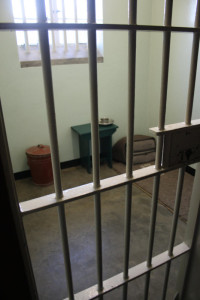 And then it was all over. We walked out to the yard, Derrick took us to the exit, and we said our goodbyes.I felt an odd mixture of elation and depression. Very happy that I had been to a UNESCO World Heritage Site of such importance, happier still that it was no longer a prison, and most happy that I was leaving. Yet also depressed and ashamed because of the suffering this place represented.
And then it was all over. We walked out to the yard, Derrick took us to the exit, and we said our goodbyes.I felt an odd mixture of elation and depression. Very happy that I had been to a UNESCO World Heritage Site of such importance, happier still that it was no longer a prison, and most happy that I was leaving. Yet also depressed and ashamed because of the suffering this place represented.
Duly subdued, we gratefully returned to our boat to ponder our feelings of inspiration and shock, enjoy the beautiful sunset cruise back to Cape Town, and watch a school of dolphins at play in the sea.
Remember when planning a visit to Robben Island, that the tours don’t always run on time. There was no snack bar on the boat. Our boat was 1 hour late in leaving Cape Town harbour and then we were rushed through our tour, which was a pity as there was too little time for questions.
A suggestion would be to make no appointments after the visit as the timing can vary, and also, take a snack pack. A sun hat and sun block are also good ideas.
Ferries depart (supposedly) at 9am, 11am, 1pm and 3pm, weather permitting, from Nelson Mandela Gateway, at the V&A Waterfront in Cape Town. Tickets costs are R230 for adults and R120 for children (U/18). Telephone: +27 (0)21 413 4200
Fax: +27 (0)21 419 1057
Canadian Museum of Nature Fun for All Ages
If you are heading out to Ottawa to skate on the Rideau Canal and to enjoy Canada’s capitol, leave some time to explore the Canadian Museum of Nature, their first national museum, completed in 1912.
The Beaux Arts building was recently renovated and is now fronted by a towering glass atrium. That’s where we found the arts and crafts action. Perhaps leave that for the end, after you’ve had a chance to watch “Exploding Geology”, the tornado demonstration, walk through the large bird display (and play on the interaction boards), swoon over the 1200 gorgeous minerals, rocks and meteorites , meet the 10-metre blue whale, enjoy the full size mammal gallery (look for the reindeer), go face to face with a triceratops, or spy on the tarantula.
Kids of any age and their parents will enjoy their day. If you have time there are two movies, “Nature Unleashed” and “3D Dinosaur” but our gang liked the interactive museum more. Special exhibits coming up will show off Ikebana, Japanese floral design, Flora of the Canadian Arctic and in the summer, the Hidden Lives of Ants.
Trivia buffs should note that this Canadian Museum of Nature served as home to Canada’s House of Commons and Senate following the fire that destroyed the Centre Block of Parliament in 1916.
Location: 240 McLeod St., Ottawa, Canada
Phone: 613-364-4021
www.nature.ca
FL: Frog’s Leg Festival
In Fellsmere FL the annual town fair has the usual hotdogs, fried dough, turkey legs and candy apples but here the main feature is the frog leg and gator tail dinners. There’s rides, games, and stage entertainment: rock, country and blues bands. For those that enjoy browsing and shopping they also have about 100 booths of crafts. There is a free shuttle bus that will take you from Mesa Park to the festival.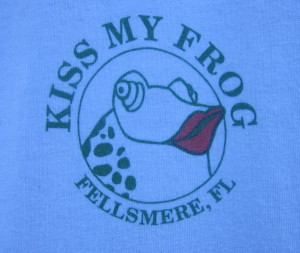
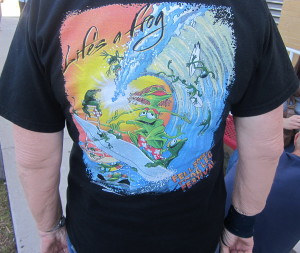
Location: Exit 156, go west about 3 miles until you see the traffic and signage
Hours: Jan 19: 10-11, Jan 20: 11-6
Frog Leg & Gator Tail Dinner Hours: Sat 11-9, Sun 11-6
